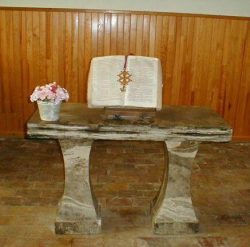Saint-Jean-de-Maruejols (Gard)
Of the temple built in 1598 after the Edict of Nantes, only the Communion table remains
Two temples were built successively
At the beginning of the Reformation, the first temple was built in the village on the Cèze stream. It was destroyed during the wars of religion. The second temple was built after the Edict of Nantes (1598). It was dismantled by the king’s dragoons upon the Revocation in 1685.
The grounds of the 1598 temple transformed into a garden
Given to a “Roman Catholic” family, the grounds of the temple were made into a garden. Amongst the ruins remained the communion table with a beautiful asphalt top which probably came from the neighbouring Avéjean mines. It remained in the Catholic family until the present temple was built and inaugurated in 1821.
The asphalt stone table returned to the 19th century temple
When the present temple was built, the Catholic owner of the table gave it back to the Consistory. It had been in his garden for over two centuries.
Saint-Jean-de-Maruejols (Gard)
Saint-Jean-de-Maruejols
Bibliography
- Books
- DUBIEF Henri et POUJOL Jacques, La France protestante, Histoire et Lieux de mémoire, Max Chaleil éditeur, Montpellier, 1992, rééd. 2006, p. 450
- LAURENT René, Promenade à travers les temples de France, Les Presses du Languedoc, Millau, 1996, p. 520
- REYMOND Bernard, L’architecture religieuse des protestants, Labor et Fides, Genève, 1996
Associated notes
-

The Edict of Nantes (1598)
This was Henri IV’s major achievement : the terms of this edict ensured the peaceful coexistence of Catholics and Protestants and brought a stop to all hostilities in France after 36 years... -
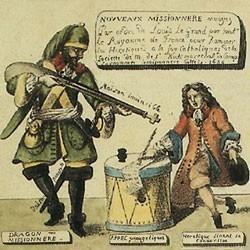
The "Dragonnades" (1681-1685)
A “Dragonnade” was the forced lodging of dragoons, the king’s soldiers, in Huguenot homes. The latter were looted and mistreated until they renounced their faith. -
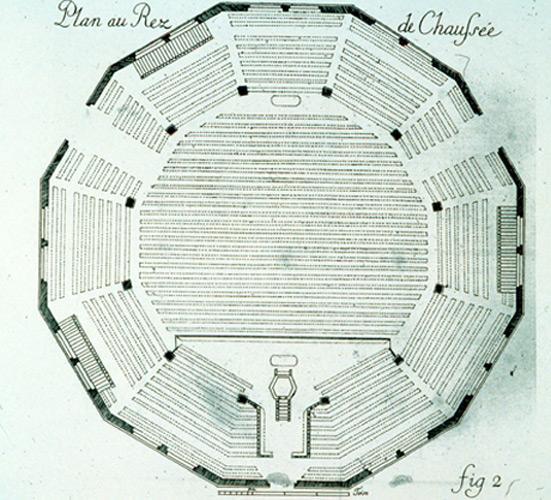
Décors de temple
Les temples protestants sont très sobres, car les lieux de culte doivent être dépouillés de toute image, pour éviter toute idolâtrie. -
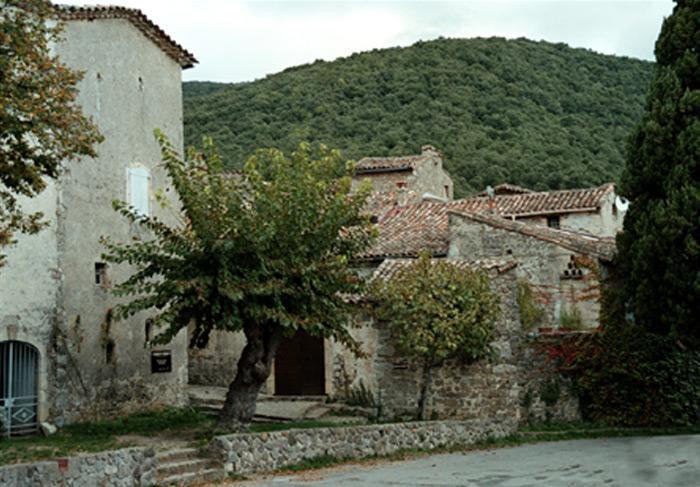
The Désert museum
The “Désert” period in French Protestantism lasted from the Revocation of the Edict of Nantes by Louis XIIV (1685) to the Edict of Tolerance (1787), when Louis XVI restored civil... -
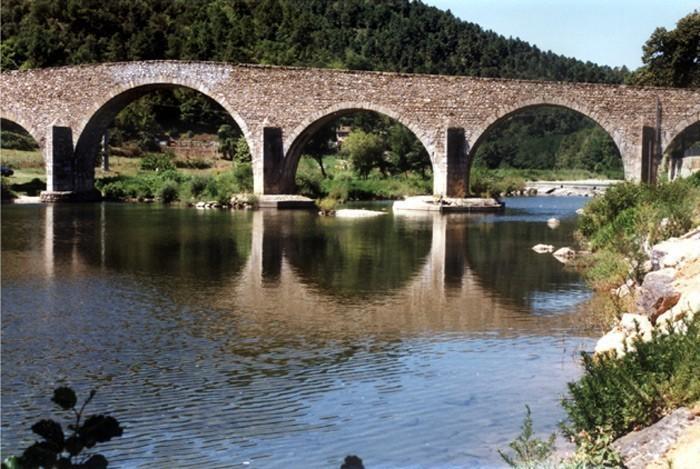
Museum of the Cevenol Valleys
In this traditionally deeply protestant region, this hostile environment has had its effect on the local inhabitants : farmers here had to be tough, uncompromising, brave and with great willpower to...

